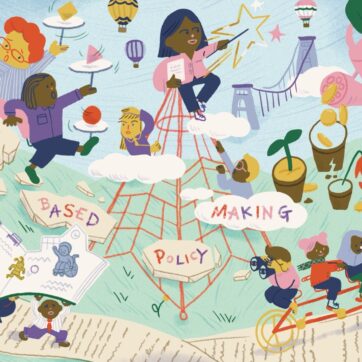At Staffordshire University, placemaking – and how we can contribute to it – is a key concern. Our main campus is in the heart of Stoke-on-Trent, a city that is renowned for high levels of deprivation, yet also for its unique cultural heritage, and sense of community. As Co-Director of our C3 Centre: Creative Industries and Creative Communities, I am especially interested in the role of arts and culture in creating place, including through storytelling. ‘The Levelling Up agenda’ is also generating much debate within and beyond our university walls. Stoke-on-Trent City Council has secured Ł56m from the government in Levelling Up funding, and the University is a major delivery partner for Levelling up activities. Our Vice-Chancellor, Prof. Martin Jones – an economic geographer – has highlighted both the contributions that modern higher education institutions like Staffordshire can make to Levelling Up, but also the critical challenges.
Given this context, I was delighted to be invited to contribute to the recent ARMA (Association of Research Managers and Administrators) seminar series ‘Place Matters’, organised by Dr Camelia Dijkstra, Head of Research Services at the University of Wolverhampton and Chair of UPEN’s Regional & Devolved Engagement subcommittee. The session that I contributed to, along with my colleague Prof. Jon Fairburn, took place on 3 May 2022 and addressed Place and the Impact Agenda. Given my role as Research Impact Manager, I decided to focus my contribution on the role of policy and placemaking in REF2021 impact case studies. Rather than just discussing Staffordshire University’s case studies, I was keen to engage with other impact professionals across the sector to gain a wider perspective. I developed a short set of questions to try to find out how people had approached policy and placemaking, exploring themes, challenges and lessons learned.
I piloted the questions with the Midlands Impact Group (a network of impact professionals that I chair) and then shared more widely with the ARMA Impact Special Interest Group. I received a total of 36 responses, with most respondents having had extensive involvement in the development of REF impact case studies for their institution. Whilst this was not a formal piece of research, it offered a snapshot of some current practices and thinking in the sector. I began by asking how important people felt that the concept of place and/or place-making had been in their impact case studies. Around a third of respondents said that it was a ‘key consideration across multiple impact case studies’, and half that it was ‘occasionally a consideration where relevant’:
“It became a part of the impact narrative in over a third of our ICS (from a small part to being central in the narrative)”
“It was tangentially addressed in reference to work with local partners on belonging and engagement with decision makers.”
Other responses included an observation that place, and place-making was: “Important from the point of view of establishing national/international reach and significance. Can be useful to add “flavour” to the narrative of being specifically from the area where the institution is based.” Another noted that: “It wasn’t a priority for 2021, but is a faculty priority going forward,” suggesting that things had already moved on in the place-making agenda and priorities since the REF submission last year.
The next set of questions aimed to identify what kinds of impacts (and pathways to impact) were linked to policy and placemaking. The responses captured an impressive breadth of examples. Pathways to impact included: providing evidence to policy makers (local, national, international); linking local communities and policymakers; co-produced scientific research and advice; use of citizen science to gather evidence to support environmental lobbying; working directly with health workers; supporting new socio-economic initiatives; industrial partnerships and knowledge exchange; place-based arts initiatives, and introduction of new technologies e.g. in rural areas.
Some of the resulting identified impacts were in the areas of addressing rural challenges and rainforest conservation; promoting marine protection; reduced health inequalities; community wealth building; addressing needs of social/older people’s housing; increased area-based investments, and increased arts participation linked to place. The examples given were linked to no fewer than 18 different REF Units of Assessment. It is certainly clear that there is great potential for further reviewing the newly published REF impact case study database through a place/placemaking lens!
There were both drivers and challenges associated with ‘placemaking’ impact case studies. One of the drivers was funding, which may have increasing relevance with the Levelling Up agenda:
“Place was not a driving force but a by-product of the way in which funding was directed…”
“The impact studies which resulted from researchers being well placed to take advantage of strategic national funding schemes and also being embedded in civil/public health service was a major advantage in showing deep impact even if it was at a national level.”
The second point relates to research that links the past, present and future of a place. An example included humanities researchers who had contributed to more effective policy making through highlighting historical perspectives. There were also several examples of community building through place-based participatory arts research:
“….a research project that engaged a large group of participants to create a large scale exhibition at [named gallery/place], which explicitly responded to the place, its history and the people who live there now (and what their needs and interests are). Here place was really local and it engaged with local people to create a conversation.”
When asked about the challenges associated with policy/placemaking case studies, some respondents felt that they were similar ones to in any other impact case study. For policy impacts, this included issues of long timescales and political will. However, a specific challenge that was mentioned most frequently was that of demonstrating reach. Whilst the REF rules say that reach is a relative concept, it was still clearly a cause for concern:
“Explaining why something that was defined by a regional [focus] or was geographically bounded could or should have considerable reach. It’s very hard for English institutions (particularly outside of London) to have an impact on policy related to place and for it to be seen as more than regional.”
It was also noted that whilst we may want to build a narrative around place-making, there was little space to unpack the concept given that the main priority was simply to evidence the impact.
Finally, I asked about what advice respondents would give to academic colleagues to develop and evidence ‘policy and place’ impact, and I then summarised the responses into six key points:
- UNDERSTAND: Develop a deep knowledge of context and place; keep abreast of changes to place and policy in the lifecycle of the research and understand how policy impact works and how to contribute.
- CONNECT: Develop connections with and between individuals/organisations/policymakers; get involved in activities/meetings/relevant conferences; look for alignment – common interests and objective and keep in touch to gather evidence.
- COLLABORATE: Include partners from the outset. Through co-production, build on their insights and actively involve them at every stage of the research and impact development.
“Remember that your priorities are not always the same as those of the policy-makers. Find common ground and work on that. It doesn’t happen overnight – it’s easy to look at the four star examples and not see the years of effort and engagement with multiple groups, because this isn’t the story we tell in REF.” - COMMUNICATE: Develop effective, tailored approaches to communicating with policy makers:
“Identify key messages and deliver them appropriately. Practically this could mean having a quick pitch in mind if you meet them, writing targeted articles in relevant places (policy/industry journals, blogs) and approaching specific people (e.g. with policy briefs, invitations to meetings, etc).” - EVIDENCE: Be intentional and systematic about evidencing your impact. This is good advice for any types of impact but can be especially challenging for policy impact which is often long-term and complex.
- BE STRATEGIC: Placemaking is a changing context and needs to be considered as part of the overall strategic goals of institutions in specific areas and places. The Levelling Up agenda can currently help to shape strategy.
Acknowledgements
With thanks to members of the Midlands Impact Group and ARMA Impact Special Interest Group for sharing their experiences, and to Dr Camelia Dijkstra and ARMA for the opportunity to contribute to Place Matters.
Dr Jackie Reynolds is Research Impact Manager at Staffordshire University. Follow her on twitter @DrJReynolds


